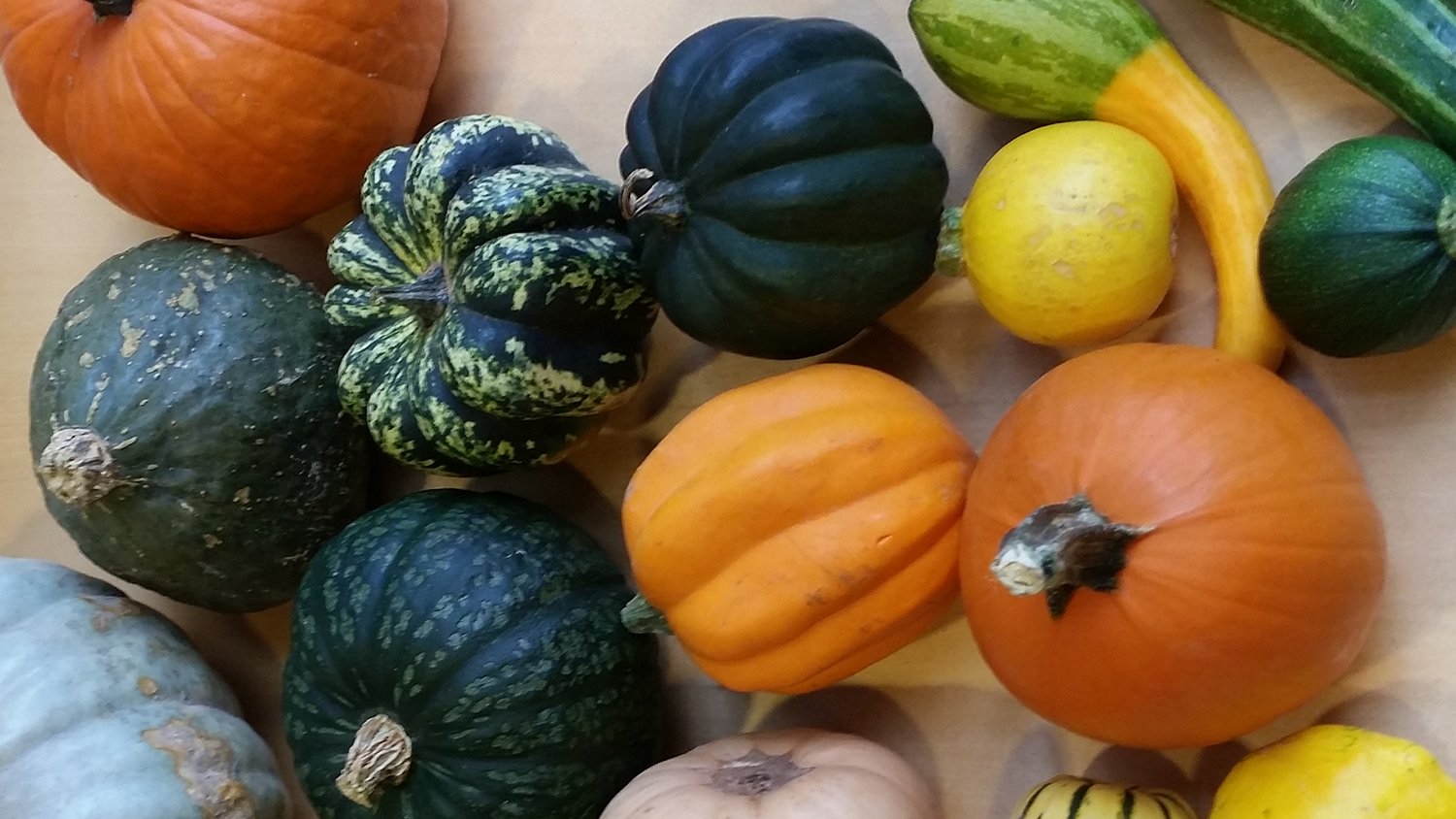‘Great Pumpkin Project’ Recruits Citizen Scientists to Document Agricultural Biodiversity

A team of biology researchers is recruiting citizen scientists from across the United States and around the world to participate in a study of which microbes and insects visit the same crop plants in different places. These citizens will help document geographic variation in the insects and microbes associated with some of our most delicious crops – eventually helping farmers improve plant health and crop yield. Because cucurbit crops like pumpkin, squash, cucumber, melon and gourds are an initial focus of the project, the researchers are calling it “The Great Pumpkin Project.”

“Most of the calories humanity depends on are from less than 200 domesticated food crop plants,” says Lori Shapiro, a postdoctoral researcher at NC State University and one of the project leaders. “Our goal with this study is to learn how the plants that produce our most important food crops interact with insects and microbes in different areas around the world.”
This is a challenge, because humans have been tinkering with agricultural ecosystems – intentionally and unintentionally – for thousands of years.
Since the earliest agricultural societies took root, humans have been dependent on cultivating crops. When humans migrated into new areas, they often took their crops with them. More recently, the rise of global trade has led to humans moving plant species across oceans and around the world, often into entirely novel ecosystems.
So, Shapiro wonders, how do the relationships between plants, insects and microbes vary from place to place? And what does that mean for plant health, crop productivity and resistance to pests?
“When you put a plant in a new environment, the plant may be exposed to insect pests or microbial pathogens – like viruses, bacteria or fungi – that it hasn’t encountered before,” Shapiro says. “At the same time, the plant leaves behind its beneficial pollinators and microbes.
“That means the plant may not have evolved defenses against these novel challenges,” Shapiro adds. “And this can be exacerbated by the fact that humans have disrupted natural plant/insect/microbe relationships that have evolved over time by domesticating crops and breeding plants for desirable traits, such as taste and ease of harvest, and breeding out traits that plants may use in defense against insects and pests.”
For example, many cultivated plants were selected by humans to reduce their natural toxins, because those toxins made the plant’s fruit bitter. But those toxins also helped protect the plant from pests. Thus, human interference made the plant both more attractive for human consumption and less able to defend itself.
To untangle these complex ecological webs, Shapiro and her colleagues in NC State’s Dunn Lab are hoping to enlist the help of thousands of people from all over the globe.
“We are recruiting participants to plant small gardens with both a native pumpkin species and a non-native cucumber species,” Shapiro says. “We provide the seeds and guidance on both how to plant the seeds and how to collect data for the study. Then, we want these students and citizen scientists to photograph the insects that visit those plants and upload the photos to a public, online photo-sharing platform that we’re using to collect data. We’ll also be collecting some physical samples from a subset of study participants.”
Teachers, 4-H clubs and anyone else interested in becoming a citizen scientist can enroll in the project through StudentsDiscover.org: http://studentsdiscover.org/lesson/the-great-pumpkin-project/. And anyone can see the observations gathered by study participants on the iNaturalist.org project page: http://www.inaturalist.org/projects/the-great-pumpkin-project.
“We’re looking forward to working with the public on a project that should be both fun and a big scientific step toward helping us understand the biodiversity present in crucial ecosystems that are responsible for feeding people around the world,” Shapiro says.
The work is supported in part by a Math and Science Partnership grant from the National Science Foundation.
- Categories:


